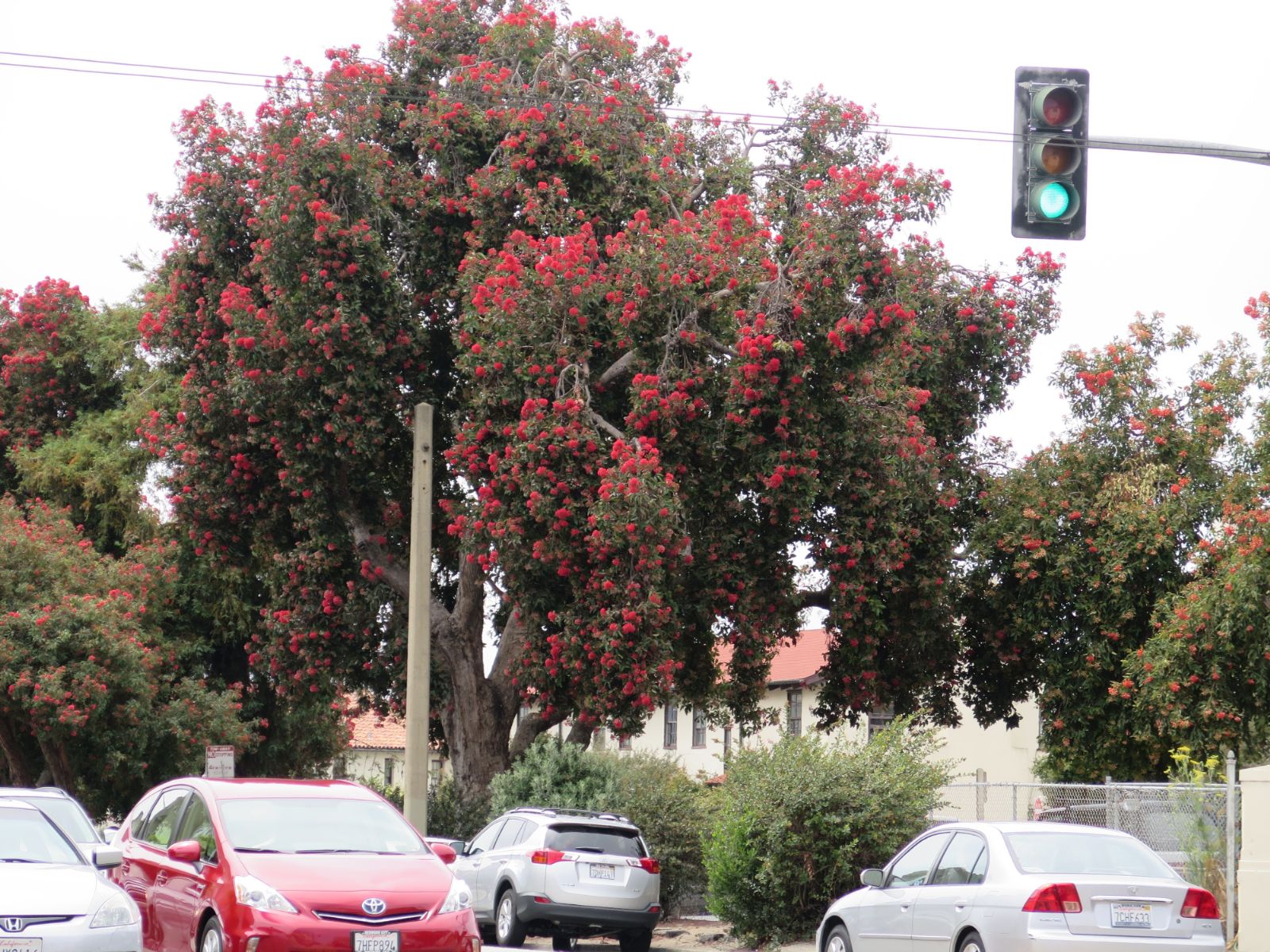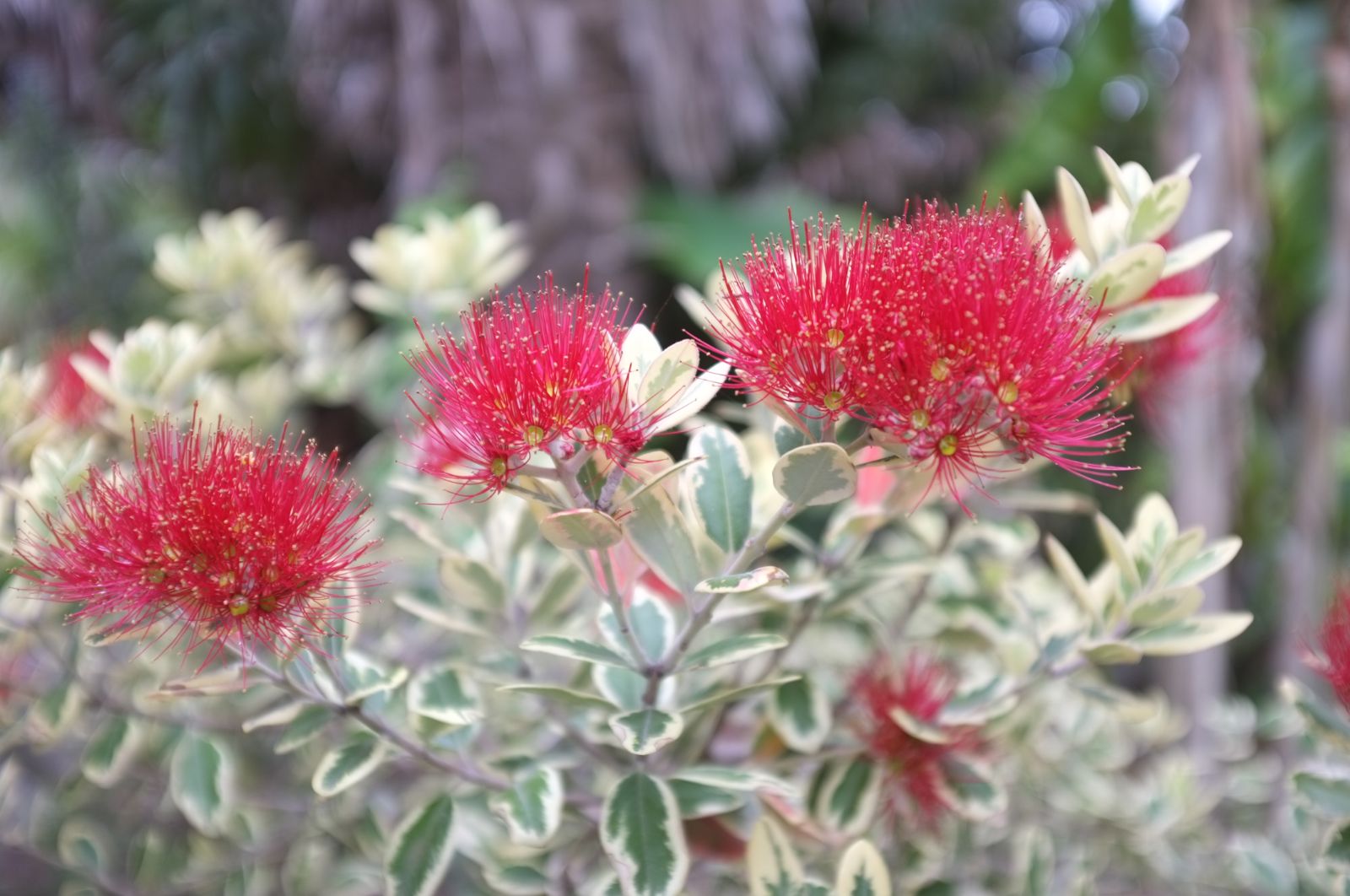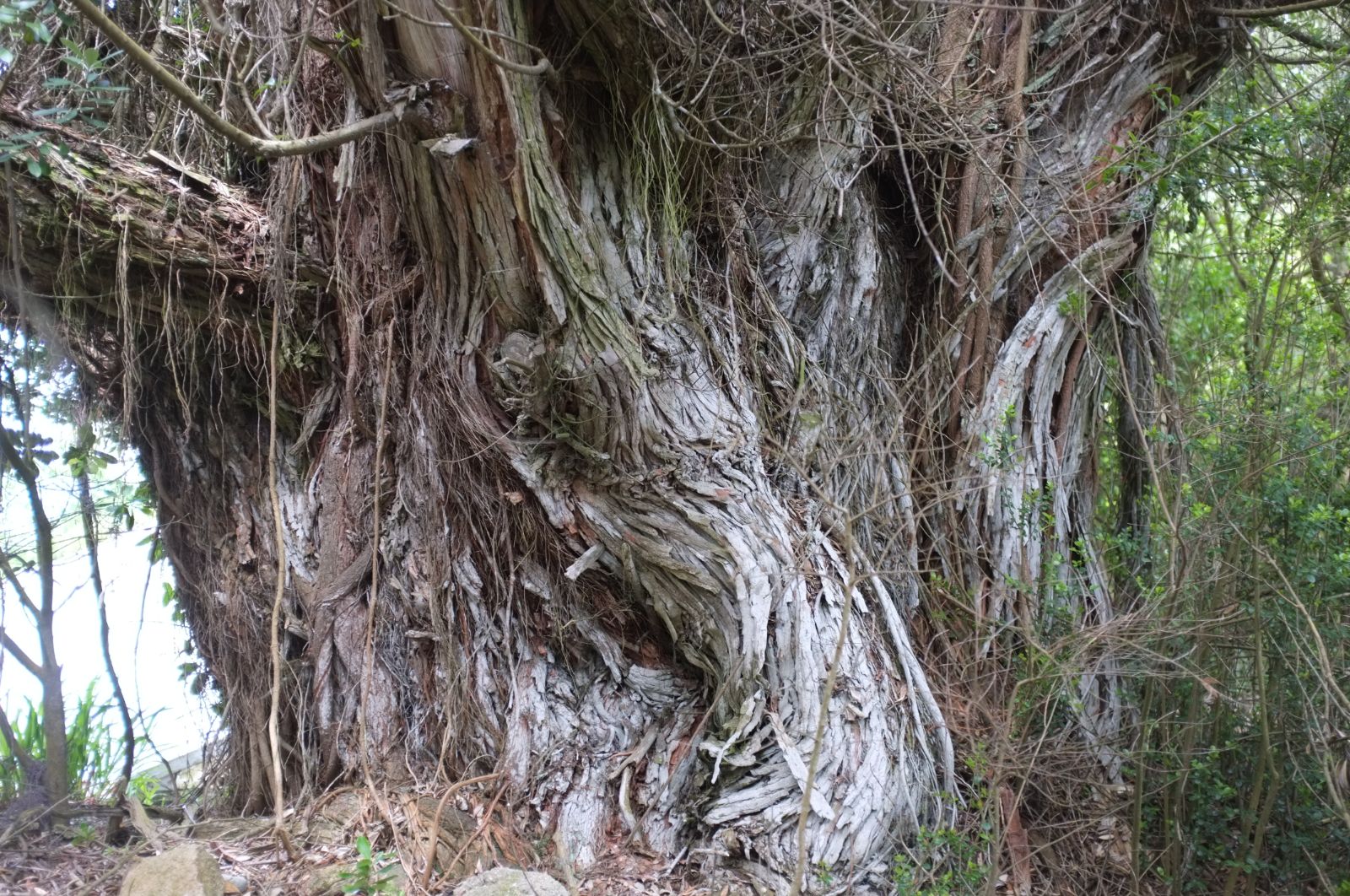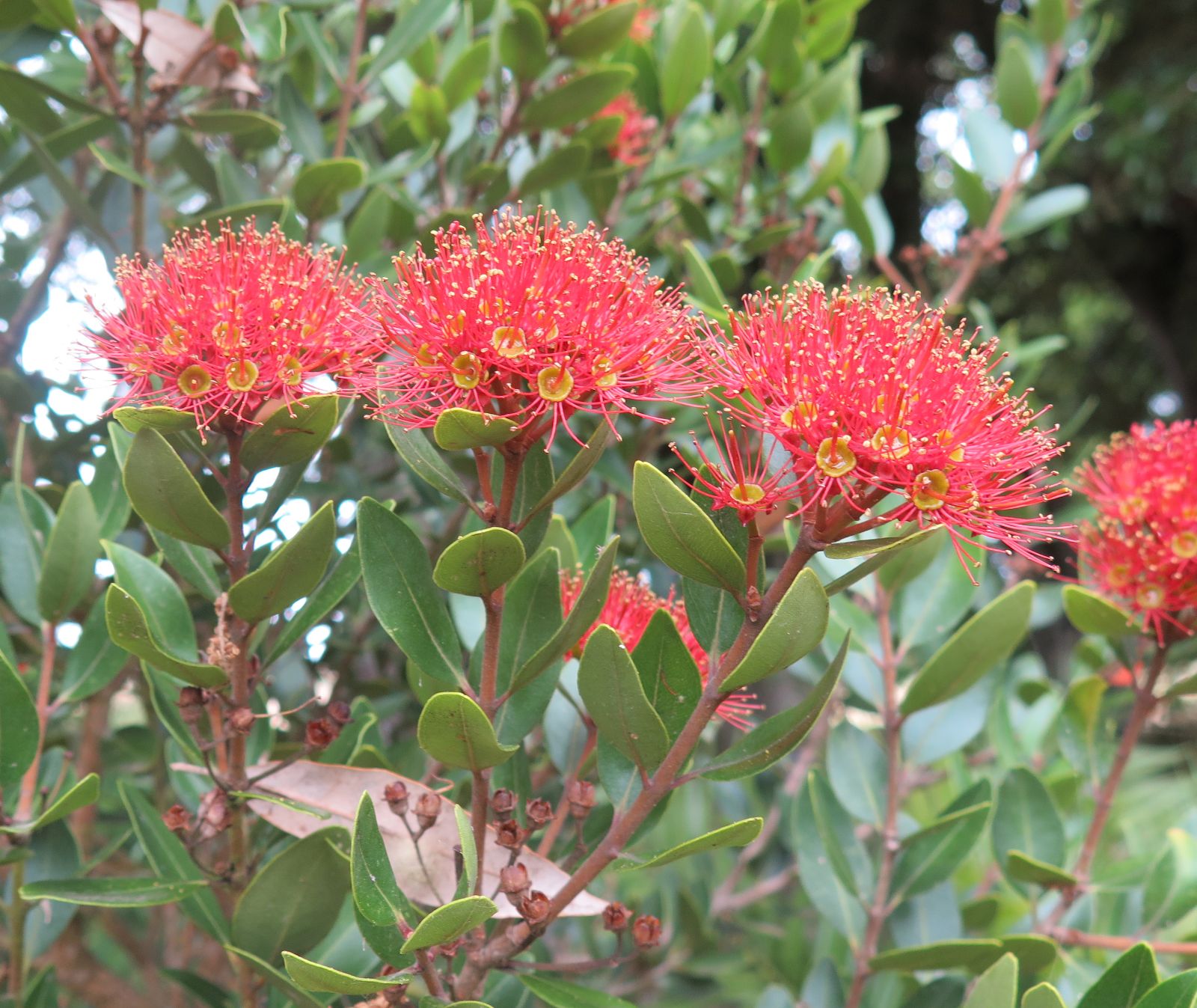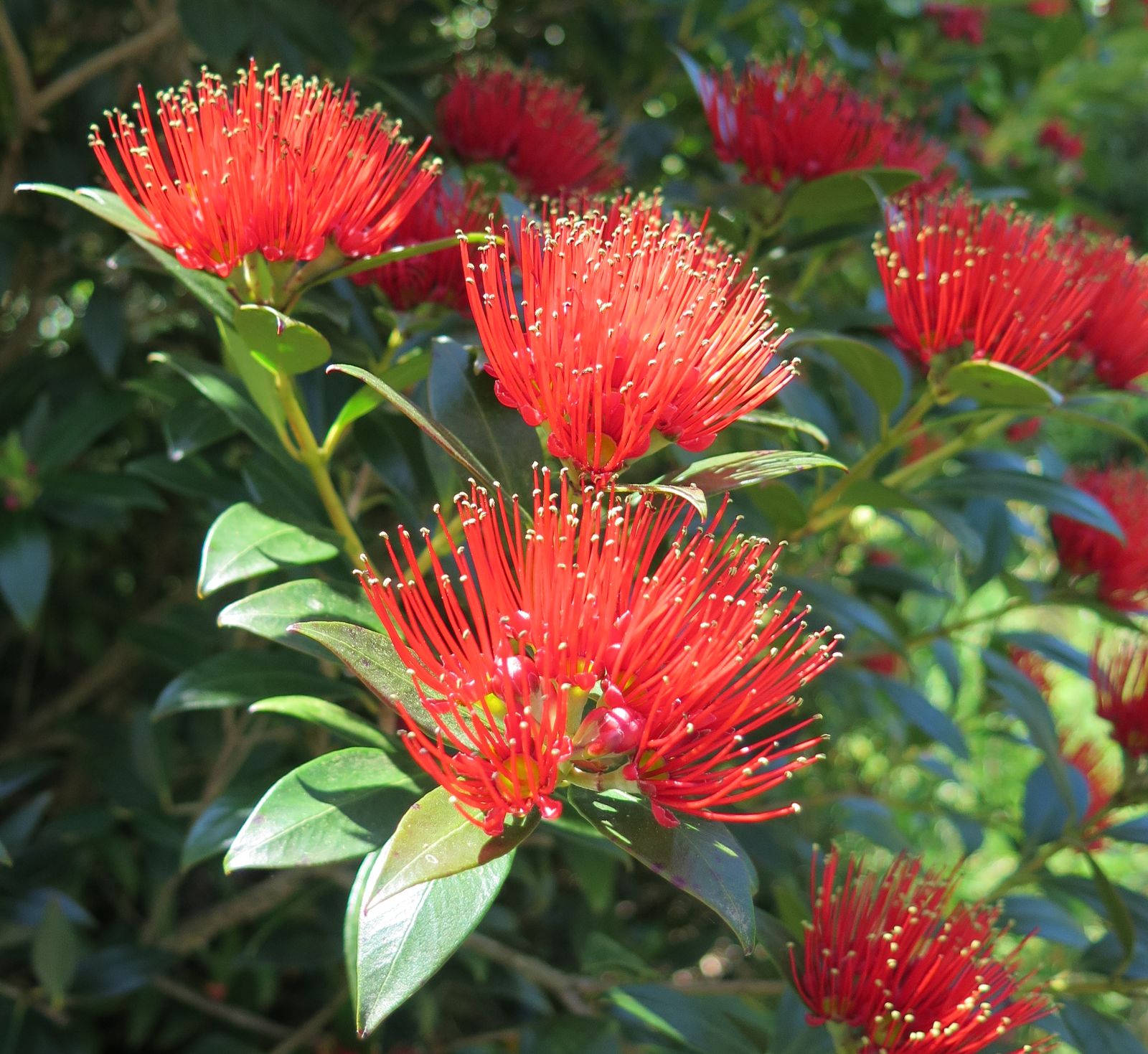Metrosideros
Credits
Article from New Trees by John Grimshaw & Ross Bayton
Recommended citation
'Metrosideros' from the website Trees and Shrubs Online (treesandshrubsonline.
Family
- Myrtaceae
The approximately 50 species of Metrosideros are widespread in the Pacific, ranging from the Philippines to Hawaii and New Zealand; there is also a single species in South Africa (M. angustifolia Sm.). They are epiphytic or terrestrial trees, shrubs or climbers. The leaves are opposite, petiolate and leathery; usually pubescent when young. Inflorescences are axillary or terminal racemes or cymes, rarely single-flowered. The flowers are usually 5-merous, red, pink, yellow or white; the hypanthium tubular to cup-shaped, lobes imbricate, petals orbicular, stamens numerous. The fruit is a leathery or woody capsule, partially or fully enclosed in the hypanthium, dehiscing by way of three valves. The seeds are numerous, and sometimes winged (Dawson 1976). The boundaries of the genus are somewhat uncertain, and a number of segregate genera are recognised by some authors (for example, Carpolepis J.W. Dawson, Mearnsia Merr., Thaleropia Peter G. Wilson).
Metrosideros skirmishes along the frontier of our area, seldom growing further than a short distance from the sea in the mildest areas. Among the species that have a toehold in temperate gardens M. umbellata, described below, is the hardiest and most likely to succeed, but others may become more widely grown if global temperatures continue to rise. Several are discussed by Owen Johnson in his report on Half-hardy Trees in Britain and Ireland (2007), and the comments that follow are based largely on this. Metrosideros excelsa, the New Zealand Christmas Tree, is of particular importance. There is a group of big trees at Tresco Abbey on the Isles of Scilly, up to 20 m or more in height, with trunks fattened by layer upon layer of aerial roots to a maximum of 223 cm diameter at 80 cm above the ground; when flowering, ‘their huge crowns turn scarlet and are visible far out at sea’ (Johnson 2007). There are a few specimens on the mainlands of Britain (far western Cornwall) and Ireland (Cork) in exceptionally favoured places, but it has been killed by frost even in so sheltered a garden as Tregrehan. As Johnson says, it could be tried in the heat island of central London (although ample water would be necessary). Metrosideros kermadecensis Oliv. is similar but has rounder leaves. This too grows on Tresco, and there is a surprise record of a plant of its cultivar ‘Variegata’ at Chapel Knap Garden, Porlock, Somerset. In the same garden, M. robusta has been planted – and again this also grows well on Tresco. At Tregrehan, Tom Hudson has planted the climbing species M. carminea Oliv. and M. diffusa. Small flowering pot plants of ‘plain’ and variegated Metrosideros (either M. kermadecensis or M. excelsa) are often available in garden centres and could conceivably be planted out in gardens. The curious outlier in the Cape, M. angustifolia (L.) Sm., has grown in the University of California Botanical Garden in Berkeley since 1906, and has been outside at Cistus Nursery for four years (S. Hogan, pers. comm. 2007). There is a good selection of the New Zealand species and their cultivars in the San Francisco Botanical Garden, and they grow well on the Pacific coast, from Ventura Co., California northwards to mid-Oregon (S. Hogan, pers. comm. 2007).
Success is most likely if the plants become established for several years before suffering any damaging frost. For most temperate gardeners, however, these will probably always be trees to go to visit.

